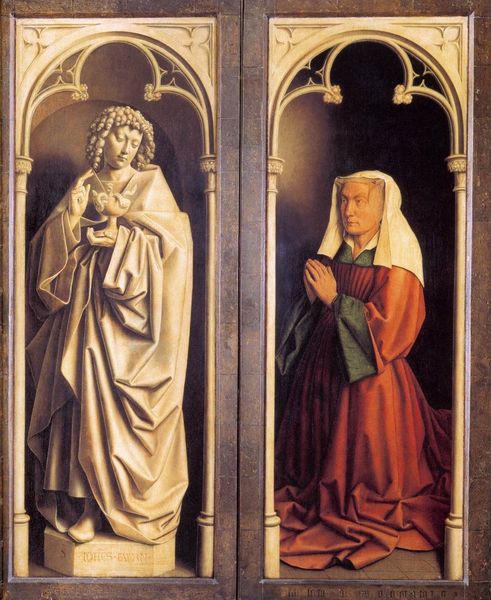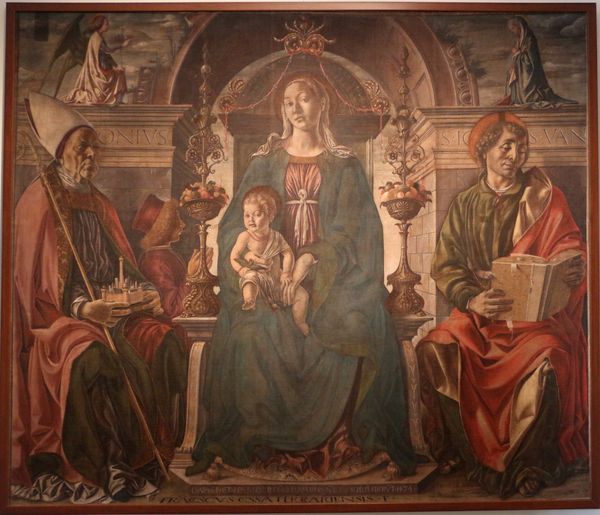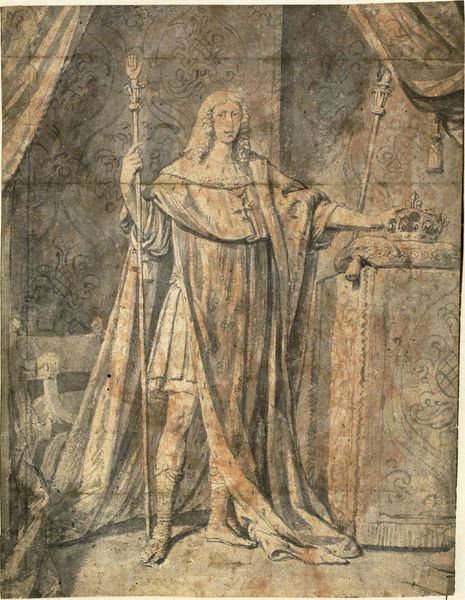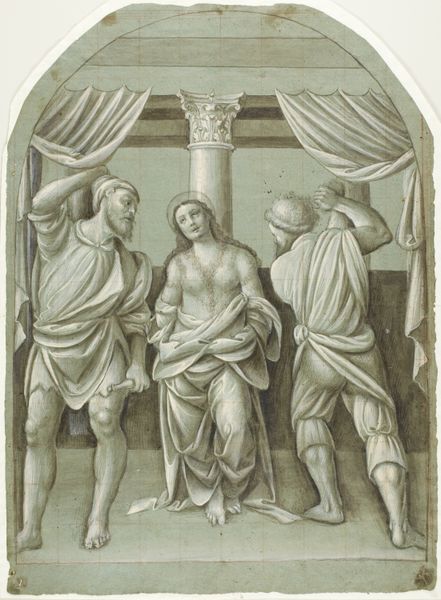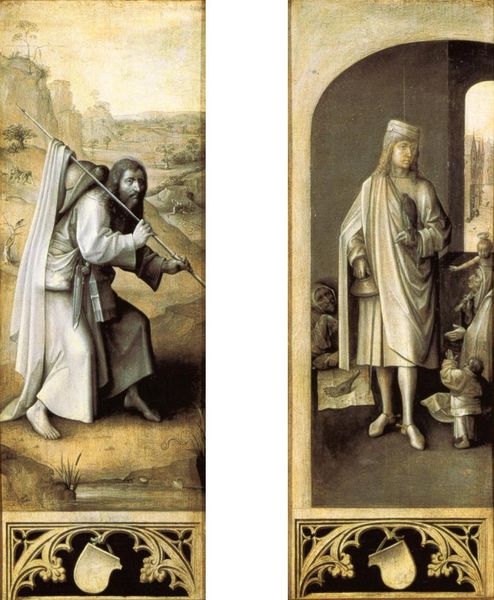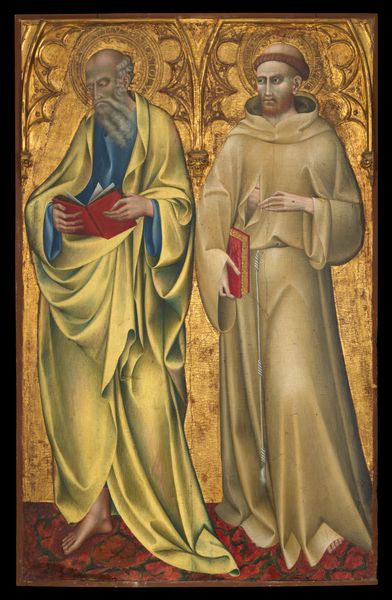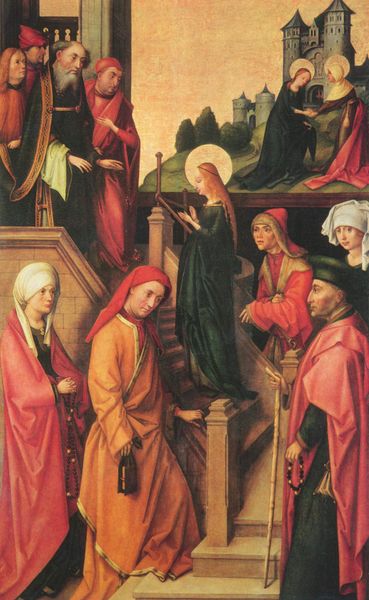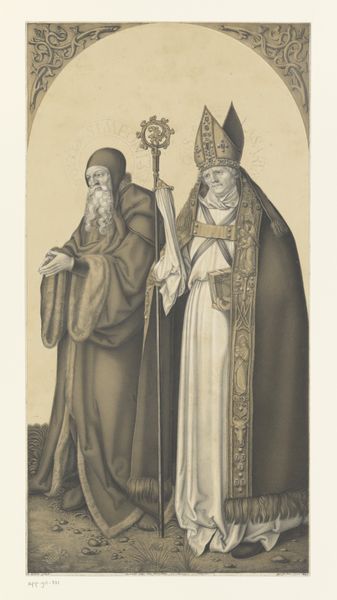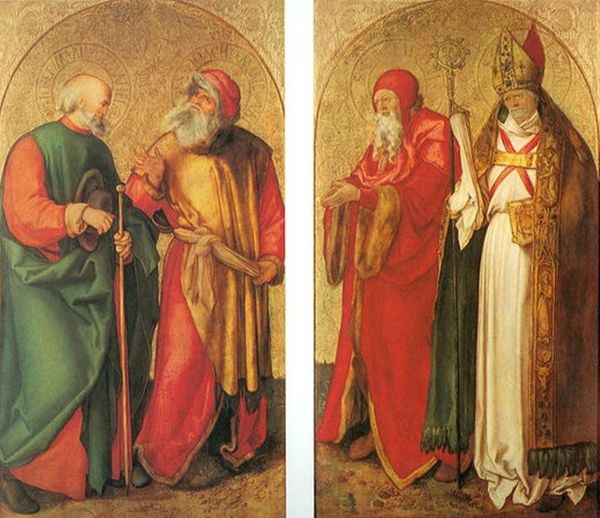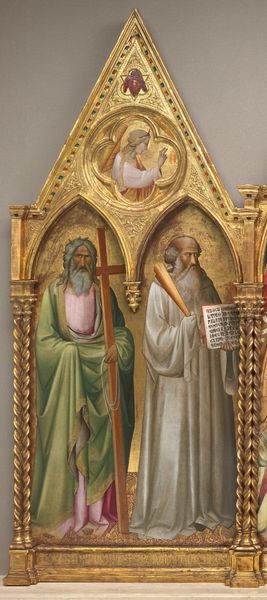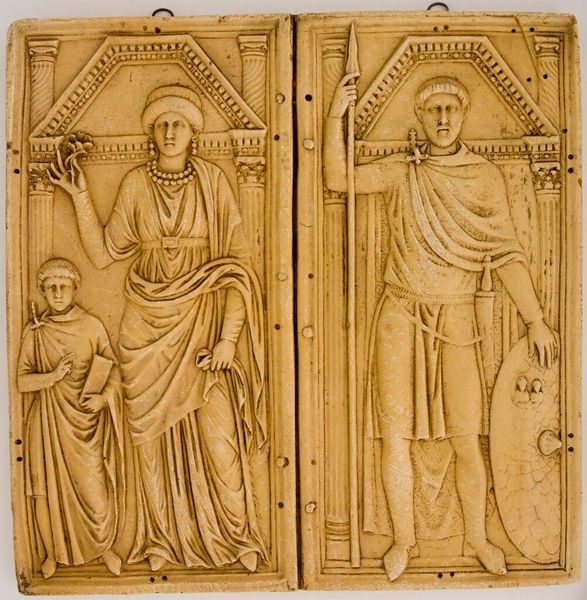
The Nuptials of the Virgin - St. James the Great and St. Clare 1420
0:00
0:00
robertcampin
Museo del Prado, Madrid, Spain
tempera, painting, fresco, sculpture
#
portrait
#
medieval
#
tempera
#
painting
#
sculpture
#
figuration
#
fresco
#
sculpture
#
christianity
#
northern-renaissance
#
early-renaissance
Dimensions: 88 x 77 cm
Copyright: Public domain
Curator: We’re standing before "The Nuptials of the Virgin - St. James the Great and St. Clare", a tempera on wood panel painted around 1420 by Robert Campin, and currently housed in the Museo del Prado. Editor: My first impression is… restraint. The limited color palette, almost monochrome, gives it a sculptural feel, as if we're looking at carved figures rather than a painting. Curator: That subdued palette is fascinating, especially considering the availability of vibrant pigments at the time. Campin’s choice suggests a focus on the structure and the way light interacts with the drapery and architecture. Think about the labour involved in meticulously rendering those folds, the time invested to give these figures substance. Editor: True, the craftsmanship is evident, but the emotional landscape is compelling too. Saint James with his sword—a symbol of martyrdom, strength. And Saint Clare, holding what appears to be a reliquary, gazing downwards—her expression suggests piety but perhaps also sorrow. Are we meant to reflect on sacrifice, loss? Curator: Interesting observation. I'm particularly drawn to the use of common, inexpensive materials for such a grand subject. Tempera, ground pigments, wood... they speak to a specific economic context. This wasn’t about ostentatious display of wealth. Editor: But these saints carry such symbolic weight, transcending their material depiction. St. James is patron saint of pilgrims and Spain. Clare, founder of the Poor Clares, is associated with poverty and healing. These choices are incredibly deliberate, referencing traditions within the Catholic faith. They are figures easily understood by those with even a passing familiarity with church symbolism. Curator: It's intriguing how Campin plays with perception. He flattens certain planes while creating depth with shadow, challenging the viewer’s sense of space and form, blurring the line between painting and bas-relief sculpture. We must also not forget about the impact such art would have at the time for the average church-goer! Editor: Indeed! Ultimately, it’s a work that operates on multiple levels – appealing both to our understanding of Christian iconography and reflecting upon medieval socio-economics. Curator: A stunning achievement really when you look into the process and all that goes into producing it.
Comments
No comments
Be the first to comment and join the conversation on the ultimate creative platform.
